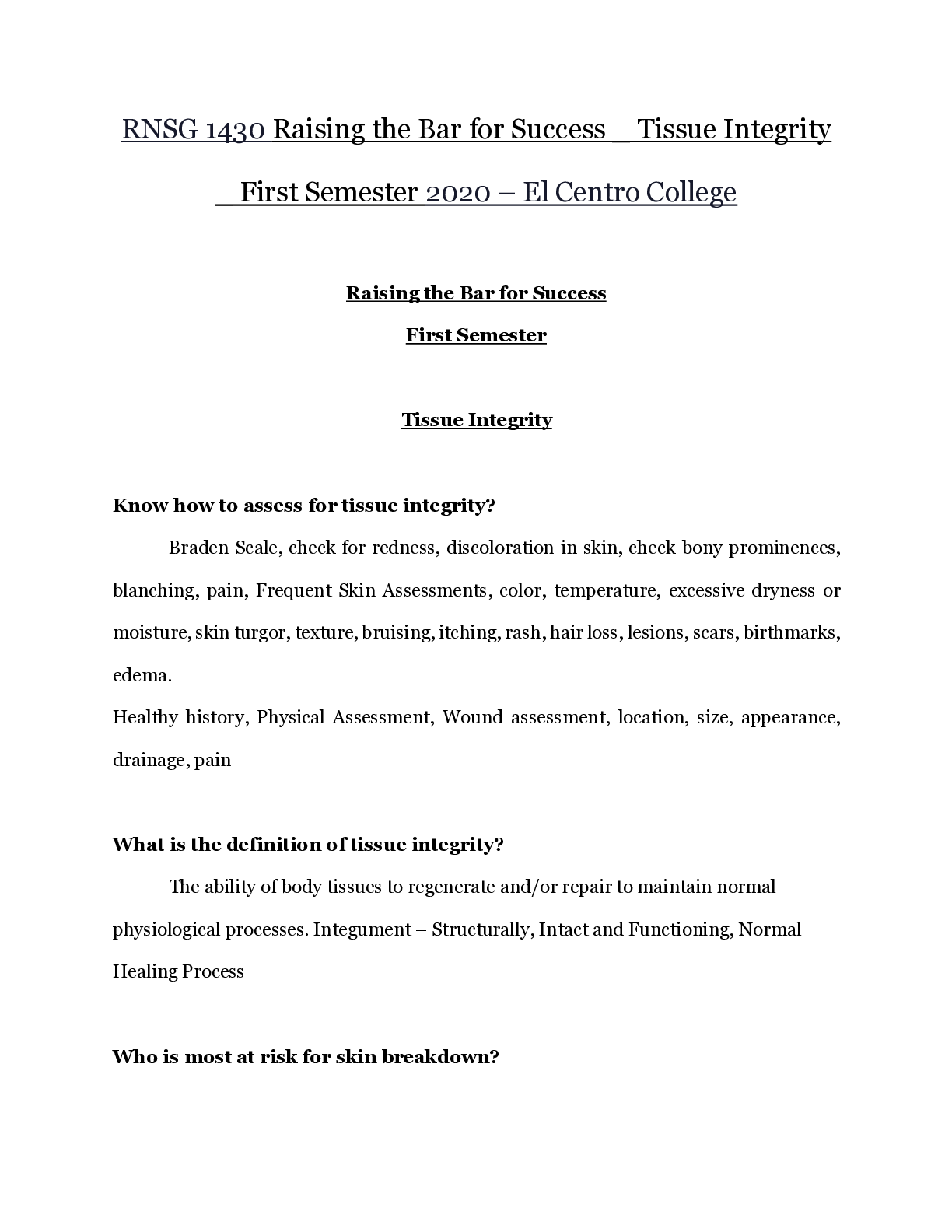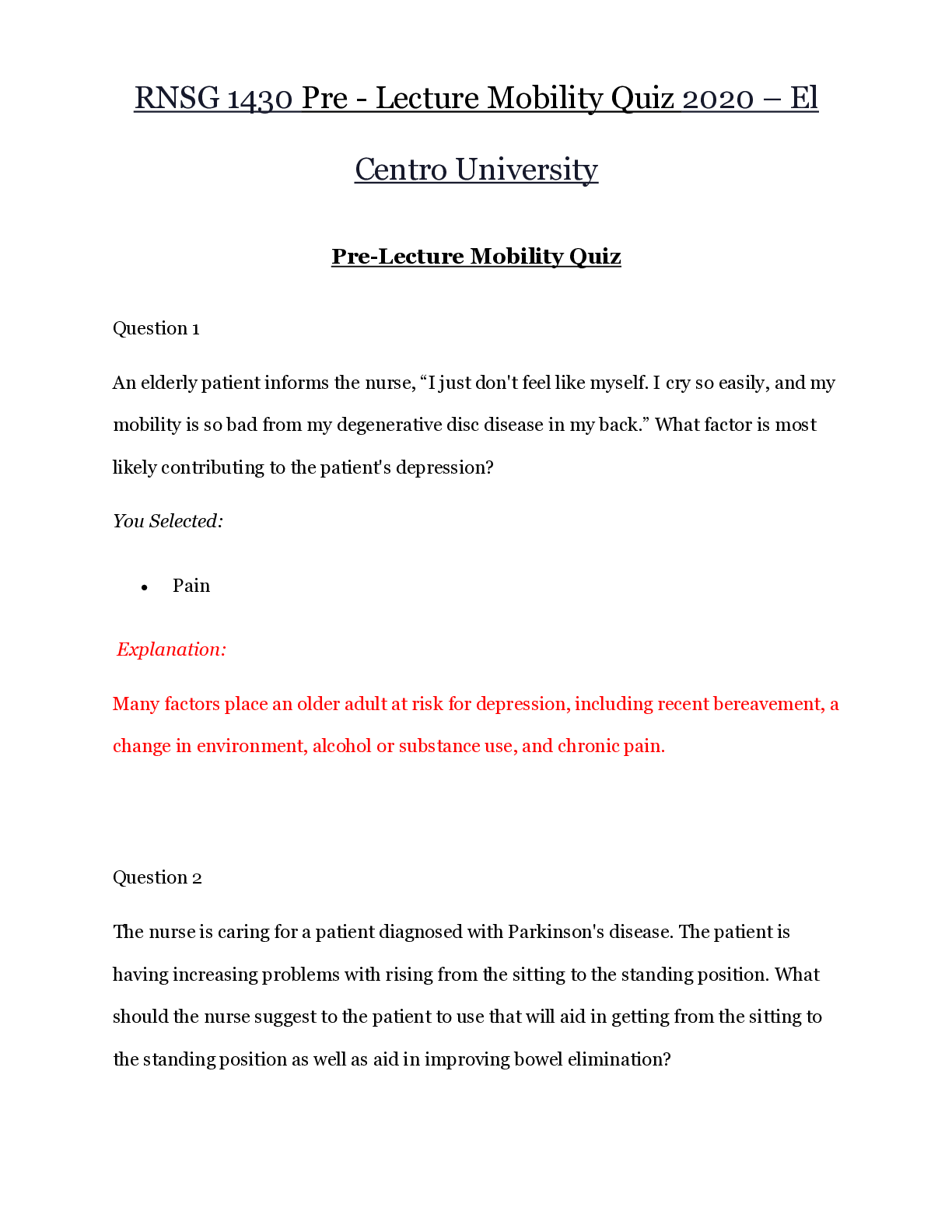*NURSING > EXAM > RNSG 1301 Raising the Bar for Success_ Mobility _ First Semester 2020 – El Centro College | RNSG13 (All)
RNSG 1301 Raising the Bar for Success_ Mobility _ First Semester 2020 – El Centro College | RNSG1301 Raising the Bar for Success_ Mobility _ 2020
Document Content and Description Below
RNSG 1301 Raising the Bar for Success_ Mobility _ First Semester 2020 – El Centro College RNSG1301 Raising the Bar for Success_ Mobility _ 2020 Mobility What is the definition of Mobility? • Fa... ctors that facilitate or impair movement of the body What are conditions that places one at risk for altered Mobility? • Older population, esp. females What clinical outcomes should the nurse look for related to Mobility? a. - - - - - - - - - - - - What is the definition of muscle atrophy? • Loss of muscle mass due to deconditioning or lack of use of muscle What is the difference between Passive and Active Range of Motion? • Passive – joint is not actively moved by client • Active – client is doing all movement of joint What important factors should the nurse teach when teaching a patient how to walk with a cane? (Med-Surg Cheever, p 166) • - - - - - - - - - - - - - - - • Strategies for adapting to environment • Performing ADLs safely • Encourage independence while ensuring safety • Assess patient’s home condition and support system • Braille and service animals How should a nurse assist a blind patient to walk? • Allow person to hold on to arm just above elbow, walking a half-step behind you (nurse) How does a patient correctly use a walker? - - - - - - - - - - - - - - - -- What is important to teach when teaching a patient how to walk with a walker? How will a nurse know if the teaching was affective? • Learning proper methods for sitting, sit to stand, and going up/down (if applicable) stairs What is necessary to consider before transferring a patient who has had a stroke from a bed (or a chair) to a wheelchair? • Give consistent instructions b/w nurse and PT • A transfer/sliding board may be used to assist pt from bed/chair to wheelchair, but be wary of shear, and do not have fingers under board (may get crushed) • Lock both bed and wheelchair before transfer • Remove footrests and detachable arms to make entrance/exit from chair easier What are the steps for transferring a patient from a bed (or chair) to a wheelchair? • Above steps • Support and gently assist pt. during position changes and protect them from injury • Avoid pulling on weak/paralyzed upper extremity to prevent dislocation • Assist pt. to move toward stronger side • Bed in lowest position, raise head to sitting position or as high as pt. can tolerate • Lock bed brakes and chair brakes (or secure if no brakes) • Encourage use of stand-assist device and have pt. sit up on side of bed, swing legs over side of bed. At same time, pivot your back leg to lift pt’s. trunk and shoulders • Stand in front of pt. and assess for balance issues/dizziness, allow pt. to dangle legs for a minute or so • Assist pt. to put on robe and nonskid footwear • Wrap gait belt around pt’s waist • Stand facing pt with legs shoulder width apart with hips and knees flexed • Ask pt to slide to edge of bed until feet touch floor • Position self close to pt with feet positioned outside their feet, grasp gait belt • Encourage pt. to use stand-assist device • Rock back and forth counting to 3, and on 3 count, using gait belt and legs, assist pt. to standing position • - - - - - - - - - - - - - - - - - - - • Impaired circulation accompanying immobility can result in skin breakdown • Pressure ulcers can result from prolonged pressure • Blood capillaries are occluded and tissues get poor circulation which leads to ischemia How does immobility affect elimination? • - - - - - - - - - - - -- - - - - • Fall risk • Proper positioning to prevent musculoskeletal complications How is a Hip Fracture diagnosed? • Common type of fracture that can occur as result of a fall • Bone densitometry used to evaluate bone mineral density (BMD) • Dualenergy x-ray absorptiometry (DXA/DEXA) measures BMD and predicts fracture risk What are safety interventions a nurse may implement for a patient with a hip fracture? • Handle affected area gently • Apply Buck’s traction if prescribed or a trochanter rol; • Use pain-modifying strategies (modify environment, administer pain analgesics as needed, encourage pt. to use pain relief measures to relieve pain, evaluate pt’s response to meds and other pain reduction techniques) • Position for comfort and function • Assist with frequent position changes [Show More]
Last updated: 1 year ago
Preview 1 out of 9 pages
Instant download

Buy this document to get the full access instantly
Instant Download Access after purchase
Add to cartInstant download
Reviews( 0 )
Document information
Connected school, study & course
About the document
Uploaded On
Oct 31, 2020
Number of pages
9
Written in
Additional information
This document has been written for:
Uploaded
Oct 31, 2020
Downloads
0
Views
37













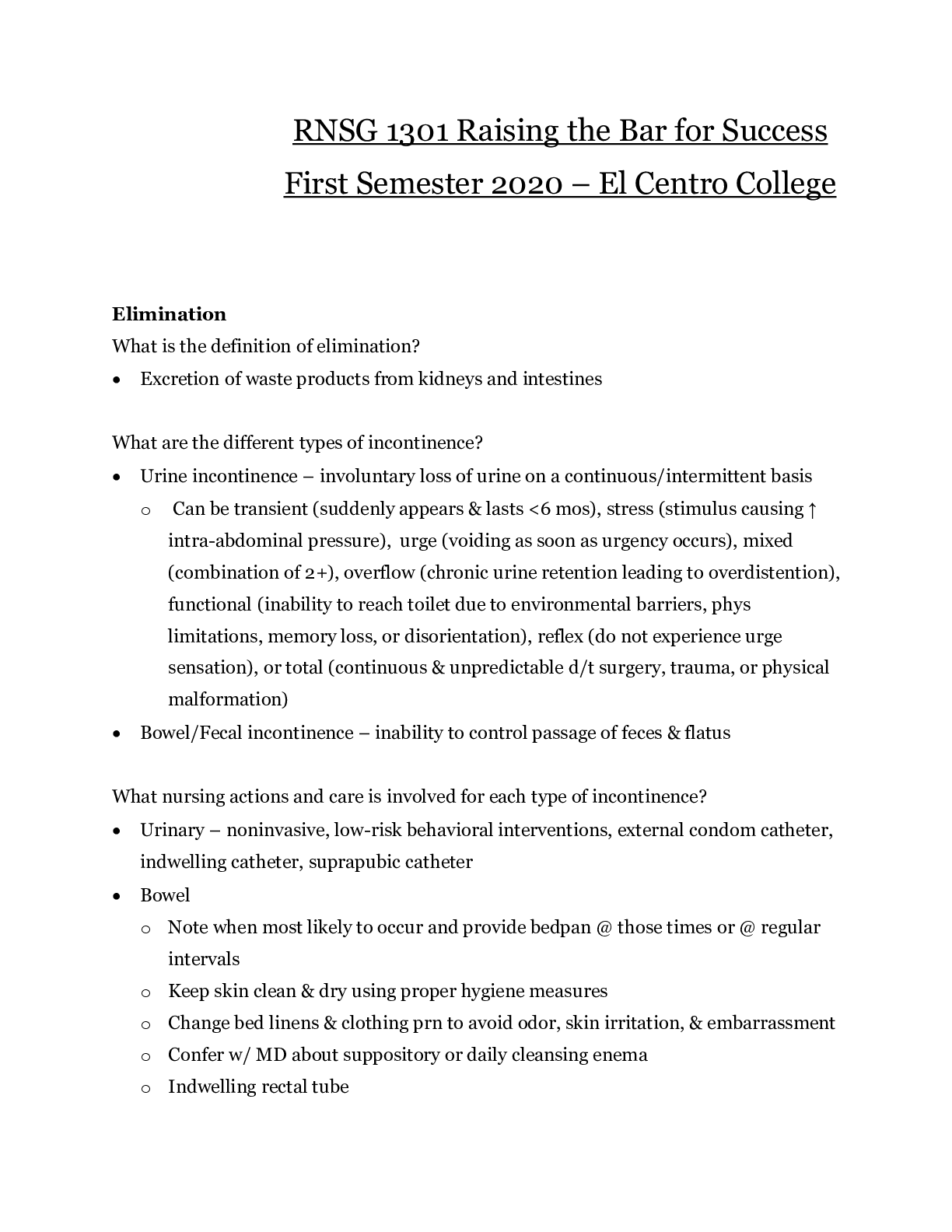
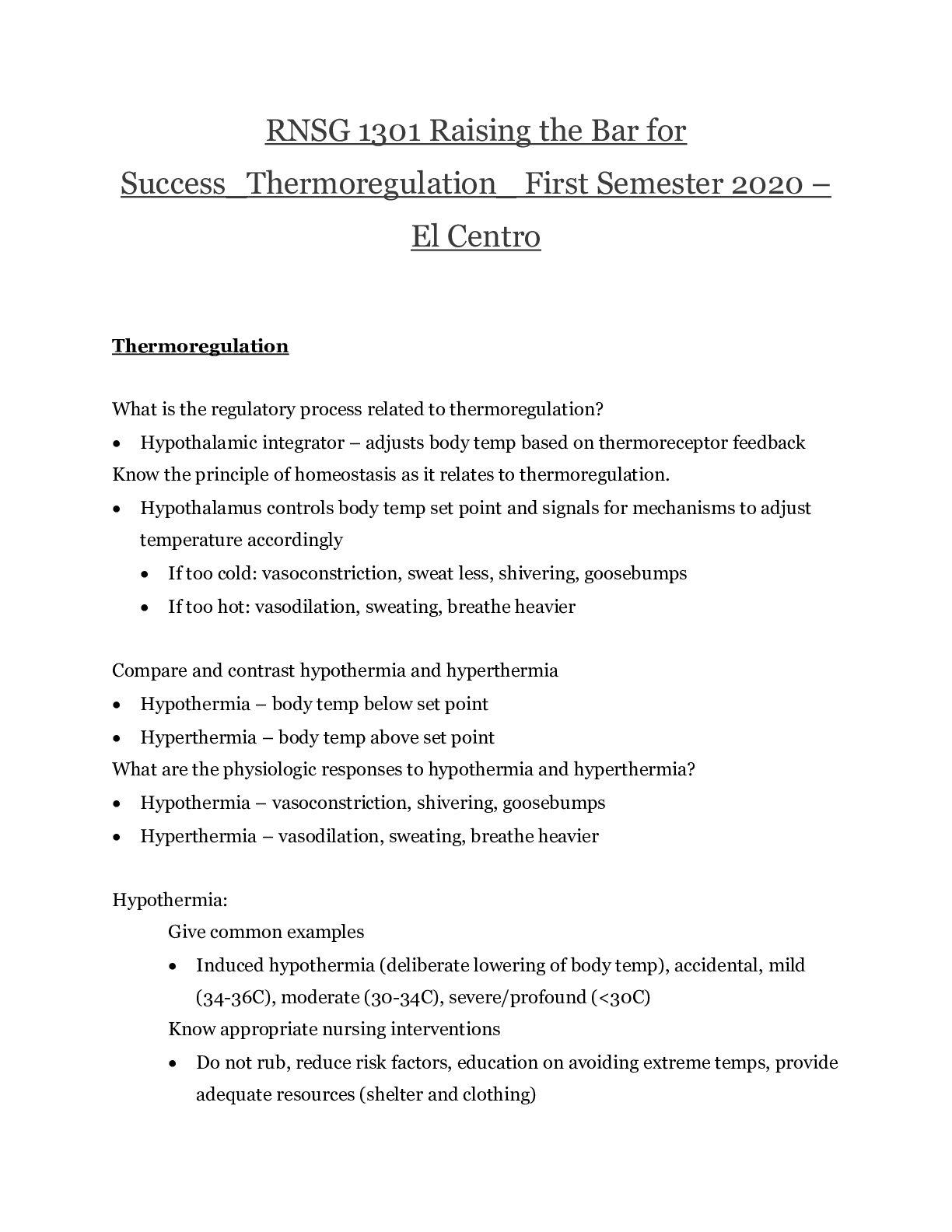
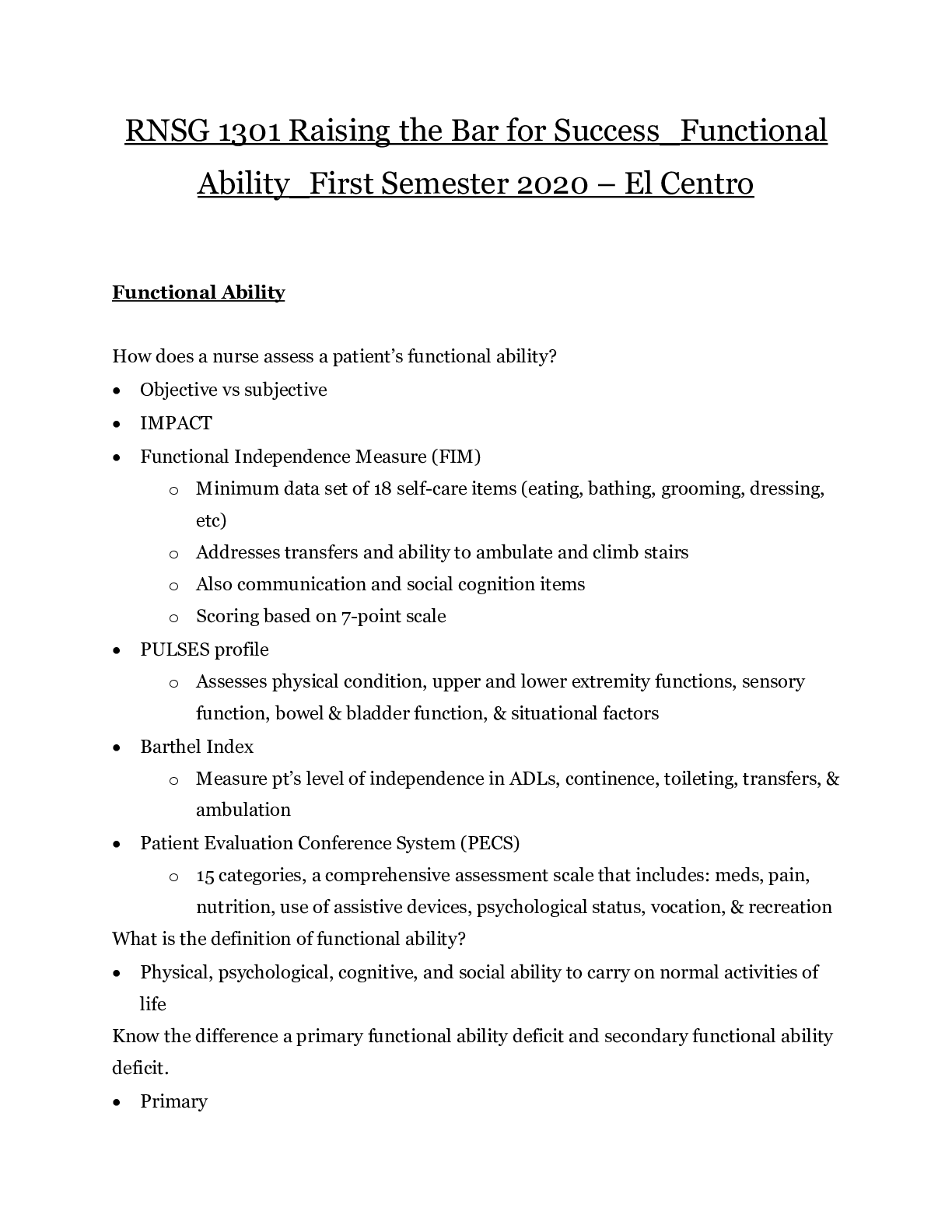
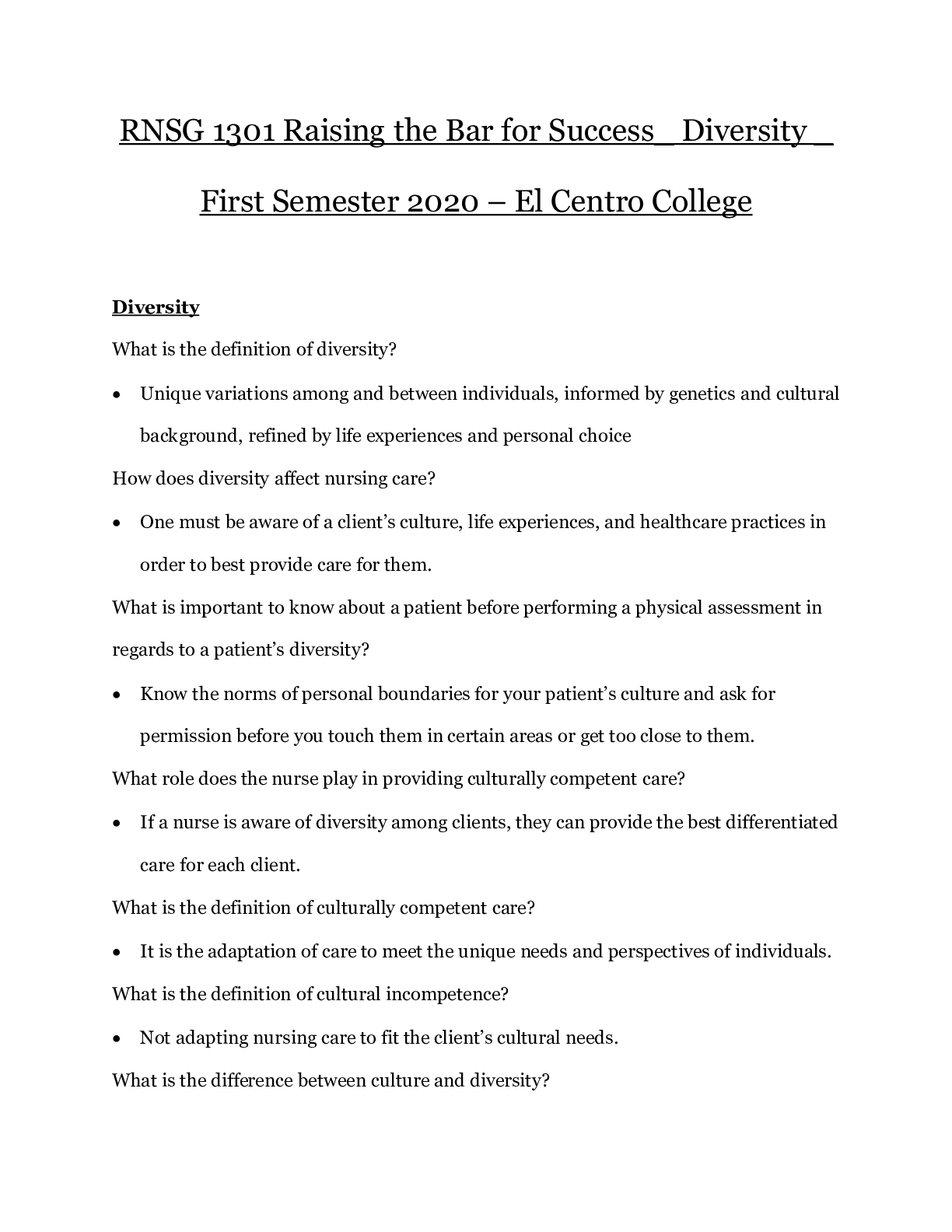
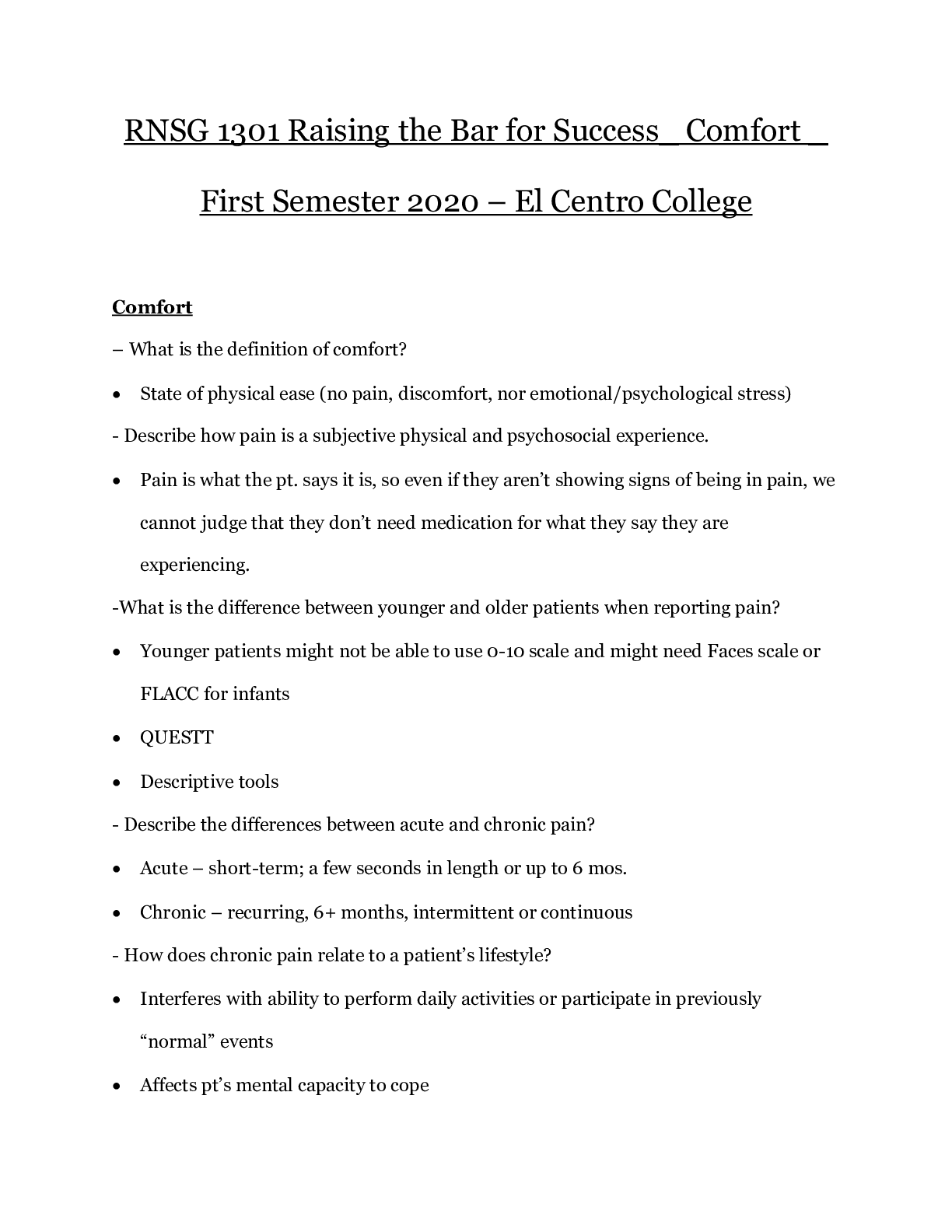
 – El Centro College.png)
 – El Centro College.png)
